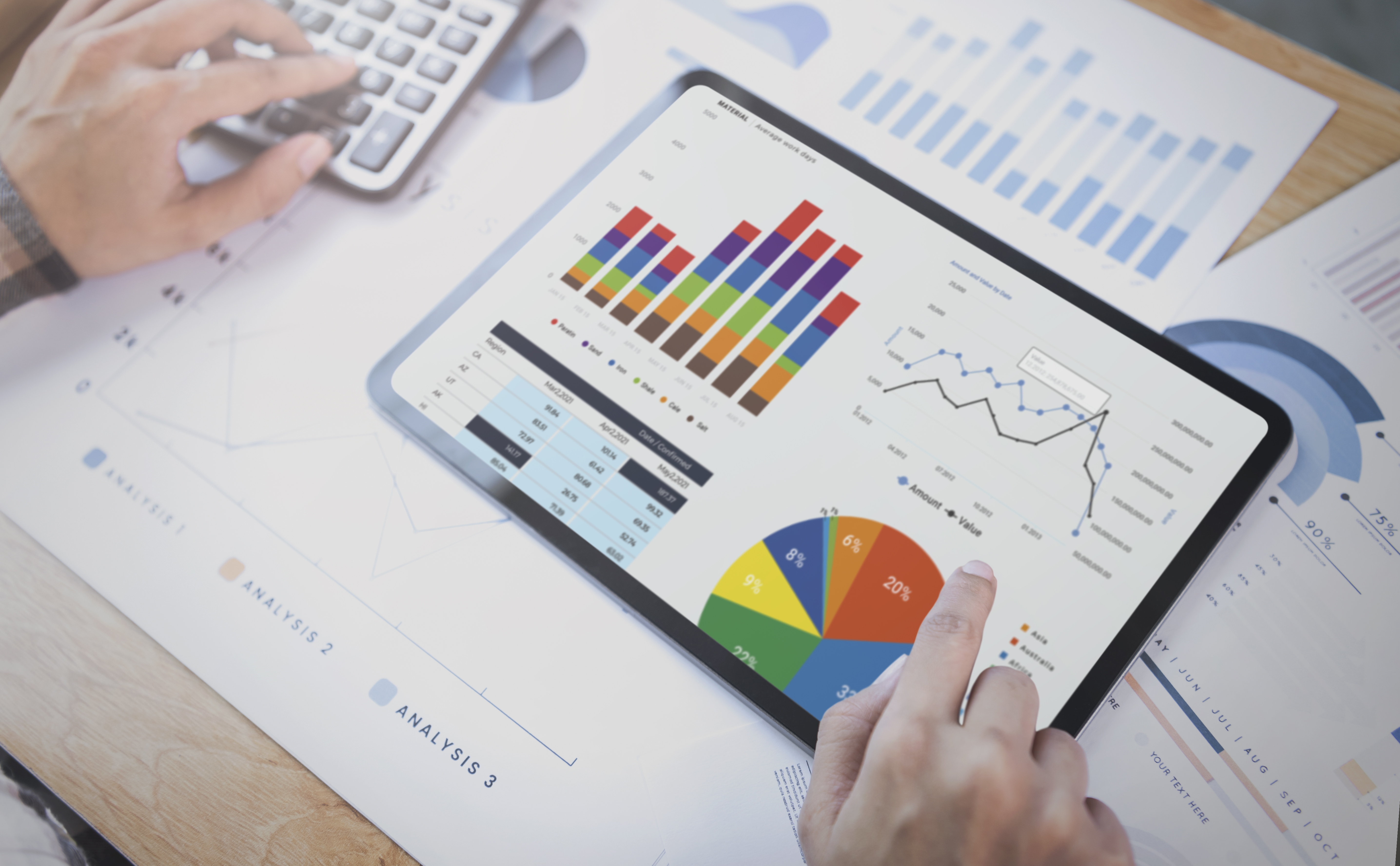Prepare for the Factory of the Future with MYOB Advanced Manufacturing Edition
Contents
A Digital Transformation Solution Brief for Progressive Manufacturers
Manufacturing Technologies and Considerations
Who could imagine a day when we would see products printed in plastic and metal on a 3D printer, batteries grown from viruses or contact lenses that zoom in like binoculars with the click of your eye? Technology is vital for manufacturers to design and produce high-quality products. Technology is just as crucial to managing business processes.
Growing manufacturers and those using entry-level accounting or legacy manufacturing ERP systems must modernise factory and business operations to remain competitive. Manufacturers may need to replace their business system or acquire bolt-on applications with limited integration and high installation, maintenance, and support costs to maintain their competitive edge.
This solution brief provides manufacturers with an overview of manufacturing ERP features and advice for connecting ERP applications with innovative manufacturing technologies. In addition, it includes a self-assessment to determine what steps to take next with strategies to execute on technology implementations, setting a future-proof platform for growth.
Simple Steps to a Factory of the Future

Features
Introduction to Manufacturing ERP
![]()
There are eight feature categories manufacturers need to consider when modernising their operations and business systems. These are general features, accounting, order management, inventory, product design, production management, planning and scheduling, and analytics and reporting. These feature sets provide manufacturers with the tools they need to eliminate manual data entry, streamline processes, connect to modern technologies, and improve visibility into all business transactions.
“Our ERP Solution attracted us because it was designed from day one to be an application development platform for the modern cloud computing era.”
- General Features

Creating a modern factory relies on innovative technologies. You should have the option to deploy in the cloud or on-premises with easy connectivity to external systems. The system should provide multiple levels of security for accessing the system and the database. Other features to consider include customisable workflows, real-time inventory updates, and flexible packaging definitions. Unit of measure conversions for sales, purchasing, manufacturing, and inventory are also important. - Order Management

Manufacturers require flexible sales management with embedded CRM, native connections to B2B and B2C storefronts and connected point of sale for omnichannel returns and exchanges. Sales applications should support back orders, item substitutions, stock reservations, and drop-shipments. Pricing, promotions and discounting must be flexible. Procurement applications should provide flexibility with requisitions, vendor bidding and blanket purchase orders. Integration with EDI, transportation and logistics, warehouse management, shipping applications and other systems is essential. - Accounting

Accounting systems must support local tax regulations and GAAP or IFRS accounting standards. Look for applications with general ledger, accounts payable, accounts receivable, multicurrency, cash management, fixed assets and time entry. Consider systems with advanced features including payroll, project accounting, deferred and recurring revenue, automated bank feeds and mobile expense management. Do not neglect multi-company allocations, consolidations and intercompany accounting. - Inventory Management

Look for ERP applications with native barcoding and flexible warehouse management including locations, bins, containers, slotting and replenishment planning. Item creation tools including imports and matrix items are crucial. Consider applications with multiple kitting scenarios and disassembly functionality. Manufacturers with perishable inventory should look for expiration dates, lot tracking, and first-expired-first-out (FEFO) picking. Consider systems that natively support small parcel, less than truckload (LTL) or truckload (TL) carriers. You may also require route and delivery management. - Product Design

Increasing complexity forces manufacturers to adopt modern computer aided drafting and design (CAD) and product lifecycle management (PLM) applications. Look for CAD and PLM software that connect with your ERP to harmonise engineering and manufacturing bills of material, track compliance and manage engineering changes. - Product Management

Modern manufacturing ERP systems provide the tools you need to manage and analyse production order details, costs, and resources with manufacturing data collection via mobile devices for clock-in and clock-out of jobs, material issues and real-time job costing. - Analytics & Reporting

Consider ERP applications with easy-touse, native reporting, flexible inquiries with drilldowns to source transactions, business events for email, and role-based dashboards with key performance indicators. Harness connected business intelligence with Microsoft Power BI for improved visibility into every part of your business and operations. - Planning & Scheduling

Nimble manufacturers rely on advanced scheduling algorithms, demand forecasts and capable to promise (CTP) calculations to harmonise material plans with advanced planning and scheduling (APS) to ensure timely material purchases, optimised stocking levels and maximised resources.
“We had no idea on what we were missing out by running our legacy ERP system compared to our new solution. We’re seeing gains in all sorts of areas including data entry and just about every functional area. The customisable dashboards allow for quick and important business decisions. I’ve been managing my staffing and overtime from a dashboard.”
Technologies
Manufacturing Technologies

Be prepared with a future-proof ERP application designed for low-code or no-code integrations using Open APIs to streamline and automate operations with modern manufacturing technologies.
- WMS, Barcodes, RFID, and IIOT
- Robotics, SCADA, PLC, and M2M
- Virtual and Augmented Reality (VR/AR)
- Cloud Computing and Big Data
- AI, ML, and Virtual Assistants
- Cybersecurity with Blockchain
- CMMS for Preventative Maintenance
- CAD and PLM Applications
- Additive Manufacturing (3D Printing)
- Connectivity, Customisation, and Tools
- Mobile and Wearable Technology
- Quality Management Systems (QMS)
- Manufacturing Execution Systems (MES)
- Collaboration & Self-Service Portals
Strategy
Steps to Digital Transformation

It is challenging to modernise operations without a cohesive plan. You have technologies in place today but are they the right ones to take you to the next level? Set a solid foundation by researching options, prioritising activities and developing detailed plans.
STEP 1: FOUNDATION

Modernising factory operations is easier when you build on a modern ERP system. It will be much more difficult and costly to modernise if you use basic accounting or older ERP systems with few integration options. Many manufacturers use a patchwork of technologies. Maintaining integrations between too many applications is costly and inefficient.
- Review Current ERP Software Features
- Upgrade or Replace ERP Systems
STEP 2: RESEARCH
![]()
It is critical to research and document factory automation technologies to prioritise modernisation activities. First, create a detailed manufacturing assessment to see which features your current applications provide and where there are functional gaps for future needs. Then, conduct a thorough business process review to identify processes that can be improved through automation.
- Research Existing Capabilities
- Identify Modernisation Initiatives
- Review Potential Technologies
STEP 3: PRIORITISE

Review the list of functional gaps and rank each one based on cost and potential benefit. It is essential to start small with a few high-priority activities. Look for ways to get more out of your current applications first. Be mindful of cost.
- Improve Existing Manufacturing Processes
- Implement New Manufacturing Processes
STEP 4: DEVELOP A PLAN
![]()
Develop a plan that defines the desired goal, supporting technologies, and a timeline and process for conducting the implementation from start to finish.
- Define Goals & Desired Outcomes
- Document Factory Automation Technologies
- Set Project and Phase Timelines
- Establish Contingency Plans
Execution
Creating a Modern Warehouse

It is time to execute the modernisation project once you have defined your plan. Remember that you do not have to automate everything simultaneously. Execution covers four phases: preparation, go-live, review and continuous improvement. Each phase is essential for the successful roll-out of new warehouse strategies.
PHASE ONE: PREPARATION
![]()
The time it takes to prepare will depend on the project’s complexity. Preparation should start well in advance of your desired go-live date. It should include a project plan review with project owners, internal staff, users, technology providers, and consultants. Consider contingency plans. A conference room pilot (CRP) improves success rates dramatically.
PHASE TWO: GO-LIVE DAY

Successful go-lives are well-organised. Identify one person as the project lead. The project lead orchestrates each step, delegates tasks to team members, makes decisions during the go-live, and documents last-minute changes for future review.
PHASE THREE: REVIEW
![]()
It will take time for things to settle into place after completing the project. Therefore, give users time to adapt to new processes while collecting data. Review go-live notes to finetune processes. Talk to users to discover what they like and what they dislike. Ask users for ideas to improve the process. Review the early results. Were you able to meet or exceed your goals? Make sure to continue monitoring results after each project.
PHASE FOUR: CONTINUOUS IMPROVEMENT

Application upgrades and other issues impact the original project. Stay current on the latest updates of your ERP software and connected technologies. Set up a sandbox for testing upgrades. Review product road maps and understand technology lifecycles. Look for ways to use existing features and technologies to improve processes and automation further. Go back to original technology implementations and implement more advanced features or tweak setups to get value and streamline additional processes.
Make the Leap to Digital Transformation with Cloud Manufacturing Solutions
A modern factory is crucial for manufacturers to thrive in today’s digital economy. Unfortunately, entry-level business applications and legacy ERP software force many manufacturers to invest in costly customisations or complex, expensive, and disconnected hardware, systems, and processes.
Manufacturers need to understand how modern technologies can transform their businesses through automation to improve quality, increase throughput, bolster sales, cut costs, and increase profits.
A disciplined strategy is vital to the success of manufacturing digital transformation. The strategy establishes a solid foundation, provides research, and defines priorities for the modernisation plan. In addition, a four-phased execution approach ensures system and process implementation success.
Balance supply and demand with inventory, sales and purchasing on top of a comprehensive suite of accounting applications. MYOB Advanced supports make-to-stock, make-to-order, batch process, repetitive and project-centric manufacturers. An extensive suite of connected manufacturing business applications for production, estimating, engineering, material planning, scheduling and product configuration provides unparalleled manufacturing depth empowering executives with options to tailor the application for unique manufacturing environments.

“The company looks for outside innovation and to work with as many ISV’s as possible to provide a multitude of solutions. We believe in that ethos because that’s how we operate.”
Grow and Thrive with MYOB Advanced Cloud ERP
MYOB Advanced Cloud ERP is a comprehensive business management solution that was born in the cloud and built for more connected, collaborative ways of working. Designed explicitly to enable small and mid-market companies to thrive in today’s digital economy, MYOB Advanced’s flexible solution, customer-friendly business practices and industry-specific functionality help growing businesses adapt to fast-moving markets and take control of their future.
For more information, book a MYOB Advanced Review or contact our team if you are ready to revolutionise your manufacturing processes!
Let us help you kickstart your digital transformation journey today. Reach out to us to explore how cutting-edge technology can elevate your operations and drive unprecedented efficiency and growth.


